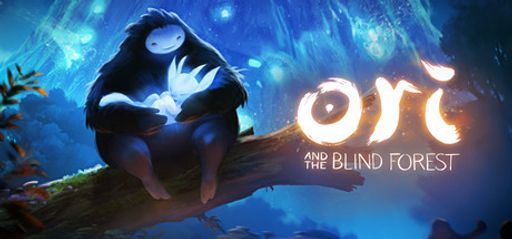Ori and the Blind Forest: A Visual and Emotional Journey

Stunning Visuals
Visually, Ori and the Blind Forest is a masterpiece. Moon Studios, the developer, crafted a hand-painted world filled with glowing flora, dynamic lighting effects, and fluid animations. Every background layer—like the bioluminescent mushrooms in Ginso Tree or the shimmering waterfalls in Forlorn Ruins—feels alive. On Xbox One, Windows PC, and Nintendo Switch, the game runs smoothly, and the Definitive Edition even adds an extra difficulty mode and more area polish. The art direction alone makes it worth playing, because very few platformers match this level of detail.
Touching Narrative
The story is one of Ori and the Blind Forest’s biggest strengths. You follow Ori and a guardian named Sein as they work to restore the forest’s core after a devastating storm. Along the way, you learn about themes like love, sacrifice, and hope through beautifully animated cutscenes and an emotional score by composer Gareth Coker. The narrative is simple but effective, making you care about Ori and the creatures of Nibel. Moments like reuniting with Naru or facing the raw grief of losing a guardian landmark are genuinely heartbreaking. At the same time, the sense of hope when you start to heal the forest gives a strong emotional payoff.

Pros and Cons
Ori and the Blind Forest really shines in several ways. First, its hand-painted art, vibrant colors, and dynamic lighting create an immersive world that few games can match. As you guide Ori through the forest, you’ll notice how each background layer feels alive. You see glowing mushrooms and softly swaying trees. On top of that, the story is genuinely touching. This tale of love and sacrifice is paired with a beautiful musical score. Every moment resonates with emotion. Exploration is also a big highlight. Unlocking new abilities like double jump and wall climb keeps the gameplay fresh. It encourages you to revisit areas to uncover hidden secrets and collectables. Finally, the controls are smooth and responsive. When you’re lining up a tricky wall-jump, everything feels precise. Landing on a tiny platform also feels smooth and under your control.
Of course, no game is perfect, and Ori and the Blind Forest has its share of flaws. One of the biggest issues is the sudden difficulty spikes in later stages. What starts as a gentle learning curve can turn into tough platforming gauntlets. These sections might frustrate players who prefer a more relaxed experience. Alongside that, there are pacing slowdowns caused by backtracking. You may find yourself retracing your steps in search of a small upgrade. This can feel tedious if you’re focused on moving forward. Finally, the combat is quite limited. Though you have the Spirit Flame ability, most encounters are brief and secondary to the platforming. You might wish for deeper or more varied combat options.

Conclusion
Ori and the Blind Forest stands out as both a visual celebration and an emotional journey. For someone like me—usually drawn to high-speed, precision-focused games—it offered a refreshing change of pace. The lush environments and heartfelt story make exploration feel meaningful. On the flip side, if you’re strictly into fast-paced challenges without a story, you might find the difficulty spikes and slower sections less appealing. Still, this game earns praise for its artistic achievements, Metroidvania gameplay loops, and emotional depth.
Rating: 3 out of 5 stars

Final Thoughts
If you enjoy games with stunning visuals, deep exploration, and a touching storyline, Ori and the Blind Forest is a must-play. On the other hand, players who prefer nonstop action or less backtracking might struggle with the steeper platforming sections. Overall, platformer fans will appreciate the world design and storytelling, even if it doesn’t quite satisfy a pure speedrun obsession.
Gaming Tip for Beginners
Use Soul Links often. Each time you activate the “Soul Link” at a Spirit Well, you save your progress and fully restore Ori’s energy. That way, you won’t lose too much progress when taking on tricky jumps or difficult platforming gauntlets.

